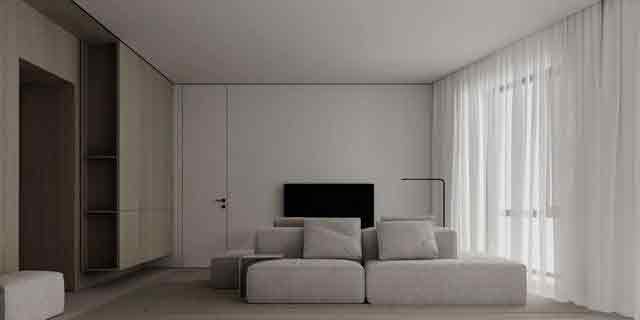# Less is More: Unveal the Beauty of Minimalism in Home Decor
In the midst of a world brimming with excess, there emerges a philosophy that cuts through the clutter and whispers a truth we often forget—less is indeed more. Minimalism, a concept celebrated in art, design, and living, remains alluring in its simplicity and transformative in its practice. Nowhere is this more tangible than in the sanctuaries we call home.
Minimalism in home decor is not merely an aesthetic; it's an ethos that reflects intentionality, freedom from material overload, and an appreciation for the space itself. It teaches us to strip away the non-essential, to make room for peace, clarity, and beauty in its purest form.
The Essence of Minimalism
The minimalist movement traces its roots back to the post-World War II Western art world, specifically within American visual arts in the 1960s. Artists like Donald Judd, Agnes Martin, and Robert Morris sought to eliminate personal expression and emotion from their works, focusing instead on the art’s physical properties—form, color, and materials.
As a home decor style, minimalism has flourished into a design language speaking of clean lines, reductive forms, and a monochromatic palette punctuated by strategic color. It echoes Japanese traditional design and architecture's Zen philosophy which emphasizes purity and simplicity.
Redefining Space
In minimalist home decor, space is not a void awaiting fillers like furniture and accessories; it is as essential as the objects themselves. The beauty of a room can be measured by the breathability of space—how it flows and feels unencumbered. This negative space serves as a visual rest, calming our minds amidst daily tumult.
The Color Palette
One fundamental aspect of minimalist interiors is the color palette. Typically grounded in neutrals—whites, beiges, grays—these colors are selected for their ability to recede into the background, providing a canvas for life to unfold upon. Occasionally, splashes of bold color are used but always with purpose and moderation.
Texture and Materials
A common myth is that minimalism equates to cold or stark environments. In truth, texture plays a vital role in adding warmth and interest. Natural materials such as wood with its rich grains or stone with its cool smoothness lend an organic feel. Fabrics like linen or wool provide tactile diversity while still adhering to the minimalist palette.
Practical Minimalist Home Decor Ideas
1.Declutter Your Space
The first step towards achieving a minimalist home is decluttering. Hold every item in your hands and ask if it serves a purpose or brings joy. If neither condition is met, it's time to let go. This process not only clears physical space but also mental space.
2.Choose Furniture Wisely
Select pieces that are both functional and simple in form. Look for clean lines and solid colors. Each piece should feel intentional and necessary without overwhelming the space.
3.Embrace Quality Over Quantity
Minimalism isn't about cheap or sparse living—it's about choosing well-made items that last longer and serve multiple purposes when possible.
4.Articulate With Lighting
Lighting should be used purposefully—to highlight architectural features or create ambiance rather than just illuminate spaces. Recessed lighting can keep ceilings clean while sculptural lamps double as art pieces.
5.Accessorize With Care
Choose fewer but impactful accessories—a vase with fresh flowers or a singular piece of artwork can speak volumes compared to multiple smaller trinkets that might clutter surfaces.
6.Incorporate Built-In Storage Solutions
Built-ins are a minimalist's best friend because they keep items out of sight and reduce the need for additional furniture. Even visible shelves can be designed minimally by organizing books by color or size for uniformity.
7.Experiment With Monochromatic Textures
To maintain interest without adding clutter through different colors or patterns, layer textures within the same color family—a knit throw over a sleek leather chair or matte pottery on a glossy table.
8.Opt for Open Plans
Where possible, embrace open-plan living which encourages light flow throughout rooms and reduces barriers to space.
9.Reflect on Mirrors
Mirrors have dual benefits—they make spaces appear larger while reflecting natural light around rooms.
10.Go Green With Plants
Plants are perfect for adding life and color while still aligning with minimalist principles—just choose simple pots that complement rather than compete with plants' natural beauty.
The Minimalist Mindset Shift
Adopting minimalism goes beyond interior design choices; it requires a cultural mindset shift towards conscious consumption and mindfulness about our possessions' lifecycle impact—from creation to disposal.
Living With Less
For those who embrace it fully, minimalism extends into other life areas—wardrobe choices become capsule collections; digital lives are streamlined; even diets are simplified focusing on quality ingredients over quantity or complexity of dishes.
Challenges of Minimalism
While minimalist living can seem liberating, it isn’t without challenges. The balance between aesthetic minimalism and functional living necessitates careful consideration—stripping too much can lead to sterile environments devoid of personal touch while clinging onto too many items defeats minimalism’s purpose.
The Rewards of Simplicity
Despite potential hurdles, the rewards reaped from minimalist living are plentiful—reduced stress from managing fewer belongings, increased savings from thoughtful purchasing decisions, and an overall heightened appreciation for what we own.
Conclusion
The beauty of minimalism lies not only in its visual appeal but also in its ability to transform spaces into tranquil havens where life’s complexities are distilled into their simplest forms—where each object holds significance, where each corner breathes easy, where home becomes an embodiment of serenity.
As you embark on your journey toward minimalist home decor remember: take your time with changes; appreciate each phase of decluttering; relish the newfound space both physically and mentally; most importantly—find joy in less because indeed less is more.
